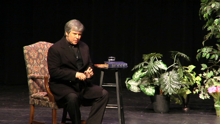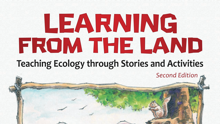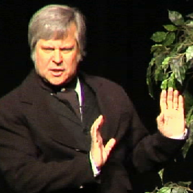A STORYTELLING RESIDENCY (3-12)
The following lesson plans are an overview of the activities I will be leading with your students. These are general guidelines; I will choose the specific stories told and the theme of the creative writing with the help of the grade level team. One of my primary goals with every artist-in-resdence is to support the classroom teachers and help them to meet state mandated goals. If there is something specific that is in your school improvement plan or curriculum goals, please let me know, and I will custom design your residency accordingly. In past residencies, I have helped students to write a musical with an emphasis on family history; we have focused on the ecology of Illinois and planned lessons for the outdoor classroom; I have helped students put together a book on local geology and the "Stories Stones Could Tell"; and we toured the world with folktales from many lands woven with songs in other languages. These are just a few of the variations on a theme that the following lesson plans can be adapted to fit.
THE PERFORMANCE
On the first day of the residency, there will be several large auditorium performances to build excitement and introduce several key concepts that will be developed through the week.
STORY WRITING
-
Review the writing process (pre-, free, and re- writing, editing, and publishing.) Discuss the ingredients of an exciting tale. (Character, setting, and plot.)
-
Guide the class through the writing process, allowing time to daydream possibilities, discuss ideas with a partner and create a rough draft of their story. Emphasize the three elements of a story: characters (description, dialogue, and action), setting (time and place), and plot (problems, solutions, foreshadowing, suspense, irony, etc.). (Please see that each student has 2-3 sheets of paper and a pen or pencil ready.)
-
Coach them through the rewriting process by asking them to make a second draft of the same story. Emphasize adding new ideas or subtracting things that would make it a better story. These stories need to be finished before the third workshop session.
-
As an optional follow-up activity, ask the students to illustrate their stories. For preliterate students you may want to take dictation and script their stories for them. These can then easily be put together into a book format.
STORYTELLING
-
Begin by telling a short, funny story that exemplifies a variety of storytelling techniques and invites the audience to participate. (The Big Mouth Frog.)
-
Lead the class through several exercises that teach various skills to improve their ability to dramatically interpret a tale. These include voice and mime exercises, theater games and guided imagery, with each isolated skill integrated into the art of telling a story.
-
Tell a short, easily remembered story that exemplifies (exaggerates) these same techniques. (The Two Friends.) Ask the students to pay attention to how the voice changes and how the body and hands are used to tell the story. Ask the students to use their imagination.
-
Retell the same story, inviting the students to stand up and tell the story simultaneously. Everyone is speaking and acting out the story at the same time, following the storyteller's lead.
-
Ask the students to choose a partner and take turns telling the same story to each other. The one telling the story should be standing, and the listener should be sitting to facilitate classroom monitoring.
-
If time permits, or as a follow-up activity, allow a few students to take turns telling this folktale to the entire class. Emphasize the use of body language and voice inflection, while encouraging individuality of expression.
TELLING OUR STORY
-
Begin by reviewing the performance given early in the week, with special emphasis on how the stories were told. The key question is: How do you use your hands, body, voice, and imagination to tell a story? Also, review rewriting strategies and challenge students to perpetually ask themselves, "How can I make this a better story?" or "How can storytelling inform the writing process?"
-
Pass out the stories the students wrote in the first session. Give the students three opportunities to practice their story before they tell it to the class.
-
A. First, they will tell it to themselves with an emphasis on their voice: character voices, sound effects, inflection, pacing and volume. (Allow time for rewriting and editing emphasizing the voice of the author.)
-
B. Again, they will tell it to themselves, but this time they will stand up and act it out, emphasizing gesture, body language, and facial expression. (Allow time for rewriting and editing emphasizing action words, verbs and adverbs.)
-
C. Finally, they will choose a partner and take turns telling their story to each other; the one who is telling the story is standing while the listener is seated to facilitate classroom monitoring. (Allow time for rewriting and editing, emphasizing constructive feedback from their partner.)
-
-
As time allows, give several students the opportunity to entertain the class with their original tales. Students may be allowed to compliment their peers, but no criticism is permitted! Over the next few days every student should be given the opportunity to perform before the entire class.
THE STORYTELLING FESTIVAL
The residency will culminate in a storytelling festival where the students will perform before their peers. Each teacher is asked to choose one student who is loud, entertaining, uses good gesture and a clear voice, and send him or her to a special coaching session the day before or the morning of the festival. The students and teachers will again gather in the multipurpose room to be delightfully entertained by these aspiring storytellers. It is also important for students to see other adults telling stories; this is a good chance for a teacher, the principal, janitor or secretary to build rapport with the students.
SPECIAL NOTE FOR TEACHERS
Your support and involvement is greatly appreciated. Feel encouraged to answer questions, make suggestions, and participate along with the students. It is necessary that you assist in classroom management, help students to stay on task, and help monitor student behavior, especially when they are working individually or in small groups. Be sure each student is wearing a nametag. Please have the materials ready in advance.
These lessons and ideas are meant to be a starting point, not the end. Please reuse or recycle any of this material and encourage your students to continue to write and tell stories. Also note the use of higher level questioning and follow-up questions, and the balance of individual and small group work. One of my goals is to support and assist you in the teaching of your content areas. The themes and objectives are designed to meet the core curriculum requirements spelled out in state mandated goals. Clearly, this is an important learning opportunity for you, as well as your students. Allow me to thank you in advance for your cooperation.









